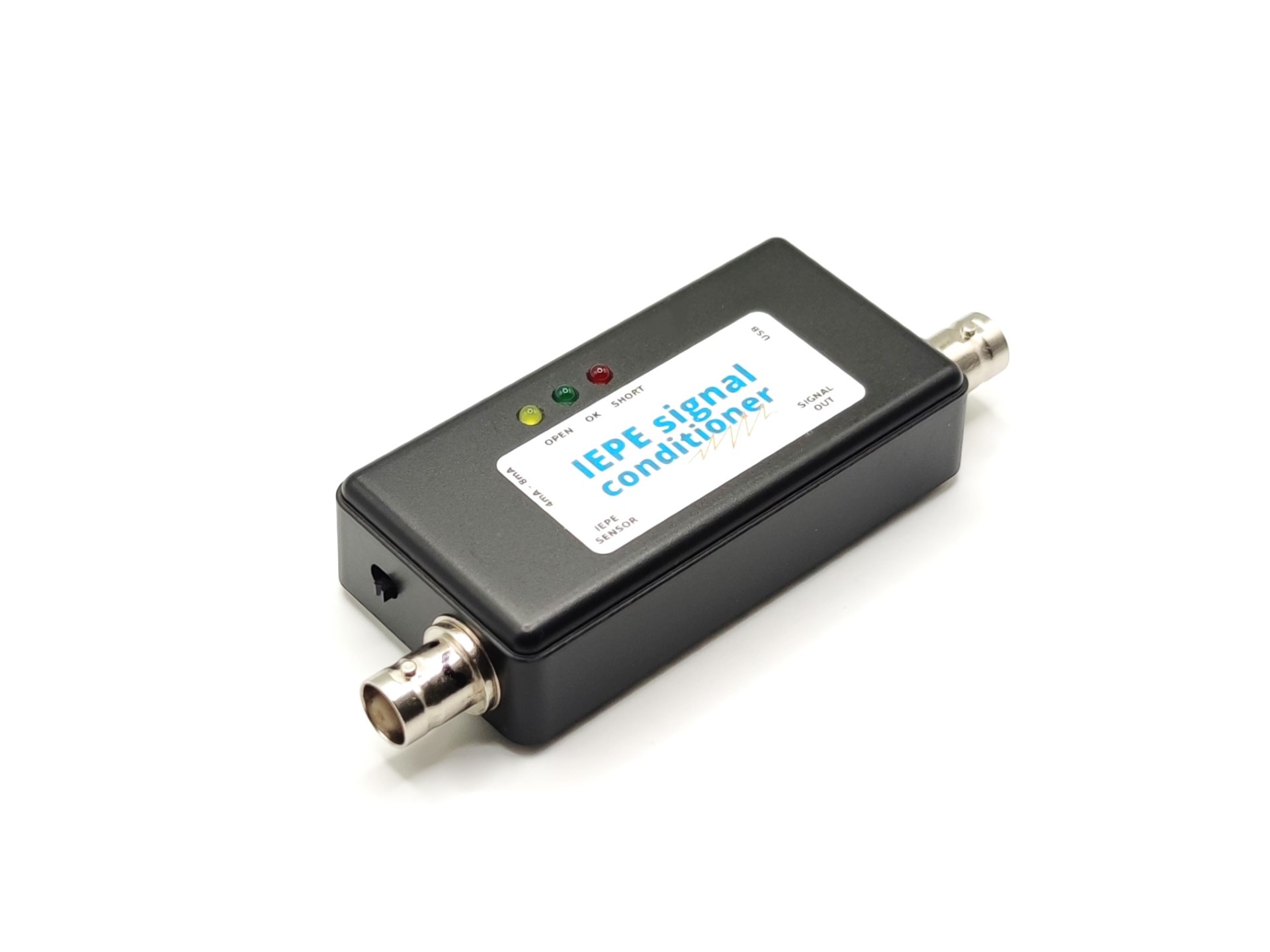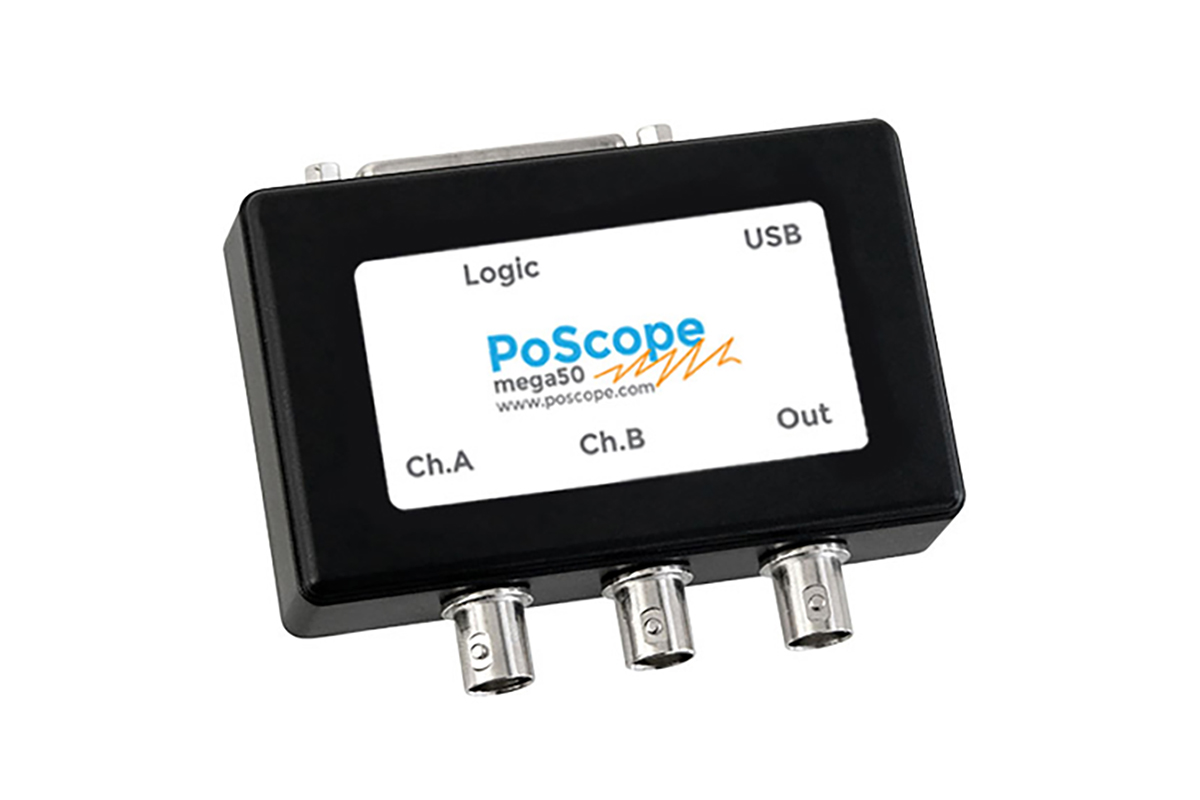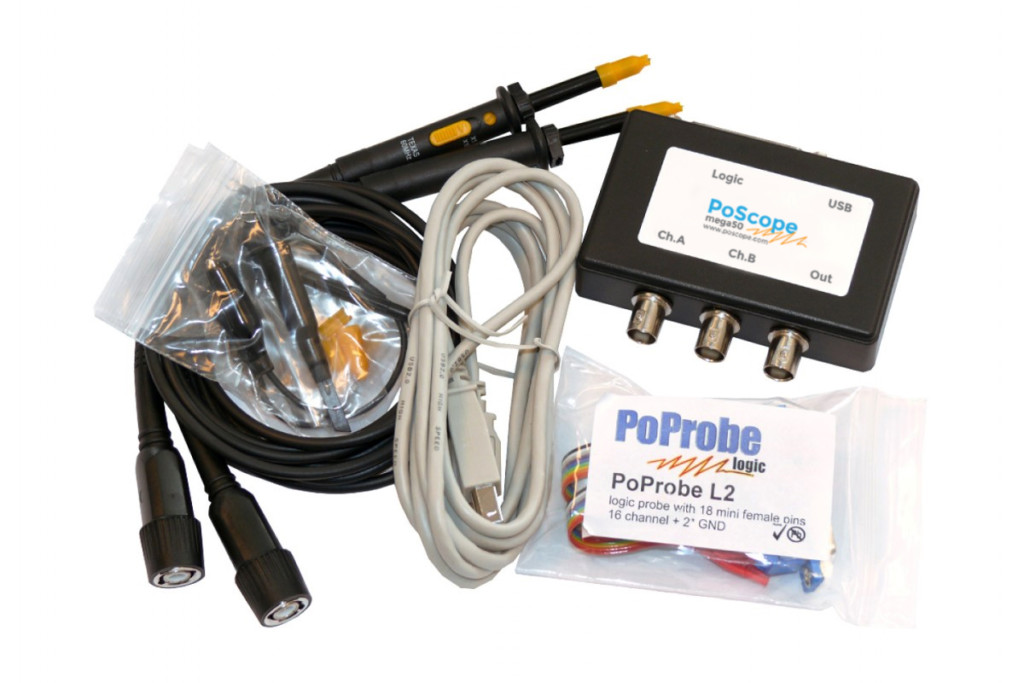In today’s fast-evolving engineering and electronics landscape, precise measurement and signal analysis are critical for innovation and troubleshooting. Whether in industrial automation, research labs, or embedded systems development, professionals rely on advanced tools to capture, condition, and interpret electrical signals accurately. Among these tools, IEPE signal conditioners, USB mixed-signal oscilloscopes, and USB oscilloscopes play pivotal roles in ensuring high-fidelity data acquisition and analysis.
An IEPE signal conditioner is essential for interfacing with sensors like accelerometers and microphones, providing power and amplification while maintaining signal integrity. Meanwhile, USB mixed-signal oscilloscopes combine analog and digital signal analysis in a compact, computer-connected device, offering flexibility for complex debugging tasks. For engineers seeking portability and affordability, USB oscilloscopes provide a streamlined solution without sacrificing performance, making them ideal for fieldwork and education.
This article explores these three key technologies in depth, answering fundamental questions about their functionality, advantages, and applications. By understanding how IEPE signal conditioners, USB mixed-signal oscilloscopes, and USB oscilloscopes work, professionals can make informed decisions to enhance their measurement setups. Let’s dive into each topic to uncover their unique capabilities and how they contribute to modern electronic testing and diagnostics.
Understanding IEPE Signal Conditioners: Functionality and Applications
Precision measurement systems rely on clean, amplified signals to deliver accurate data, especially when working with sensitive sensors like accelerometers, microphones, and force transducers. At the heart of many such systems lies the IEPE signal conditioner, a critical component that bridges the gap between sensors and data acquisition equipment. But what exactly makes this device so essential, and how does it operate within a measurement setup?
The Role of an IEPE Signal Conditioner
An IEPE signal conditioner serves as both a power source and signal processor for Integrated Electronics Piezo-Electric (IEPE) sensors. Unlike traditional piezoelectric sensors that generate high-impedance signals requiring specialized charge amplifiers, IEPE sensors incorporate built-in electronics that need a constant current power supply. The conditioner provides this excitation current—typically between 2 mA and 20 mA—while simultaneously isolating and amplifying the sensor’s output signal.

The device plays multiple roles in the signal chain. First, it delivers stable DC power to the sensor through the same cable used for signal transmission, eliminating the need for separate power wiring. Second, it decouples the sensor’s AC output from the DC bias voltage using capacitive coupling, ensuring that only the measured signal reaches the data acquisition system. Finally, many IEPE signal conditioners incorporate filtering stages to reduce noise and improve signal clarity before the data is recorded or analyzed.
Key Operational Principles
The functionality of an IEPE signal conditioner hinges on its ability to merge power delivery and signal extraction seamlessly. When connected to an IEPE sensor, the conditioner supplies a constant current, which powers the sensor’s internal amplifier. The sensor then modulates this current with its measurement data, superimposing an AC signal onto the DC supply.
Inside the conditioner, a coupling capacitor blocks the DC component while allowing the AC signal to pass through to subsequent amplification stages. Many units also feature adjustable gain settings and built-in filters to tailor the signal response for specific applications. Some advanced models even include signal isolation to prevent ground loops, which can introduce noise in sensitive measurements.
Where IEPE Signal Conditioners Excel
Thanks to their integrated design, IEPE signal conditioners are widely adopted in applications demanding high signal integrity and minimal setup complexity. In industrial vibration monitoring, they enable continuous machinery health assessment by conditioning signals from accelerometers mounted on rotating equipment. Acoustic engineers rely on them to capture precise sound pressure measurements, where even minor signal distortions could skew results. Structural testing applications, such as bridge or aircraft component monitoring, also benefit from their ability to maintain signal fidelity over long cable runs in electrically noisy environments.
Advantages Over Conventional Solutions
The primary strength of an IEPE signal conditioner lies in its simplification of measurement chains. Traditional piezoelectric sensor setups require bulky charge amplifiers and careful cable routing to minimize interference. In contrast, IEPE-based systems use standard coaxial cables and integrate power and signal conditioning into a single compact unit. This not only reduces system complexity but also enhances noise immunity—a crucial factor in dynamic measurements where signal integrity is paramount.
Final Considerations
For engineers and technicians working with dynamic measurements, the IEPE signal conditioner represents an optimal balance of performance and practicality. By combining sensor power delivery with high-quality signal conditioning, it eliminates many of the challenges associated with piezoelectric sensing while delivering reliable, low-noise data.
Next, we will examine USB mixed-signal oscilloscopes, powerful tools that merge analog and digital signal analysis capabilities into portable, computer-based instruments.
USB Mixed-Signal Oscilloscopes: Bridging Analog and Digital Analysis
In today’s complex electronic systems where analog and digital signals coexist, engineers need tools that can capture and analyze both domains simultaneously. This is where the USB mixed-signal oscilloscope (MSO) becomes indispensable. But what exactly sets these instruments apart from traditional oscilloscopes, and how do they enhance modern debugging workflows?
The Dual-Domain Advantage of USB Mixed-Signal Oscilloscopes
A USB mixed-signal oscilloscope combines the analog measurement capabilities of a conventional oscilloscope with digital logic analysis, typically offering 2-4 analog channels alongside 8-32 digital channels. This hybrid architecture allows engineers to capture time-correlated analog waveforms and digital signals in a single acquisition, providing complete visibility into system behavior.

The USB interface transforms these devices into compact, computer-connected instruments that leverage PC processing power for advanced analysis. Unlike bulky benchtop MSOs, USB mixed-signal oscilloscopes maintain high performance while offering exceptional portability. They achieve this through optimized hardware design that includes high-speed ADCs for analog capture and specialized digital input stages with configurable threshold voltages for logic analysis.
Critical Functionality in Modern Debugging
When troubleshooting embedded systems or mixed-signal circuits, the USB mixed-signal oscilloscope shines by revealing interactions between analog and digital domains. The analog channels typically offer bandwidths ranging from 50MHz to 200MHz with sampling rates up to 1GS/s, sufficient for most analog signal analysis. Simultaneously, the digital channels can capture parallel bus transactions or multiple digital control signals at speeds often exceeding 100MHz.
Advanced triggering capabilities set these instruments apart. Users can set up complex trigger conditions combining both analog and digital events – for instance, triggering when an analog voltage crosses a threshold during a specific digital state. This cross-domain triggering is invaluable when debugging issues like analog sensor readings corrupted by digital noise or timing violations in analog-to-digital conversion processes.
Practical Applications Across Industries
The versatility of USB mixed-signal oscilloscopes makes them essential in numerous applications. Embedded system developers use them to verify signal integrity between microcontrollers and analog sensors. Power electronics engineers rely on them to analyze PWM signals while monitoring analog current and voltage waveforms. In automotive electronics, they help diagnose communication buses like CAN alongside analog sensor signals.
Educational institutions particularly benefit from these devices, as they provide students with professional-grade mixed-signal analysis capabilities at a fraction of the cost of traditional benchtop units. The USB connectivity enables easy integration into computer labs, while the included software often features intuitive interfaces suitable for learning oscilloscope fundamentals.
The Software Advantage
Unlike traditional oscilloscopes with built-in displays, USB mixed-signal oscilloscopes depend on companion software for operation. This architecture offers several advantages, including larger display areas, advanced measurement algorithms, and easy data sharing. Modern MSO software packages typically include:
- Protocol analyzers for common serial buses (I²C, SPI, UART)
- Advanced math functions for signal processing
- Automated measurement and reporting tools
- Customizable display layouts
The software-centric approach also enables continuous feature updates, allowing the instrument’s capabilities to evolve over time without hardware modifications.
Selecting the Right USB Mixed-Signal Oscilloscope
When choosing a USB mixed-signal oscilloscope, key considerations include analog bandwidth, digital channel count, sampling rate, and available triggering options. For most embedded work, a model with 100MHz analog bandwidth and 16 digital channels proves sufficient, while power electronics applications may require higher voltage ranges and specialized probes.
The growing ecosystem of compatible accessories, including differential probes and logic analyzer pods, further enhances these instruments’ versatility. Many manufacturers offer application-specific software packages for power analysis, serial protocol decoding, and even RF measurements, transforming the basic oscilloscope into a multi-domain analysis platform.
The Future of Mixed-Signal Analysis
As systems continue blending analog and digital technologies, USB mixed-signal oscilloscopes will play an increasingly vital role in electronics development and troubleshooting. Their combination of performance, portability, and affordability makes them accessible to engineers at all levels, from students to seasoned professionals. With ongoing advancements in USB and Thunderbolt interfaces, future generations will likely offer even greater performance while maintaining the compact form factor that makes current models so valuable.
In our next section, we’ll explore the broader category of USB oscilloscopes, examining how these versatile instruments have revolutionized portable test and measurement across numerous industries.
USB Oscilloscopes: Revolutionizing Portable Test and Measurement
In an era where engineers demand both performance and portability, the USB oscilloscope has emerged as a game-changing instrument that redefines what’s possible in electronic test and measurement. These compact yet powerful devices have transformed how professionals and hobbyists alike approach signal analysis, offering laboratory-grade capabilities in a highly portable form factor. But what makes these instruments so revolutionary, and how are they changing the landscape of electronic testing?
The Anatomy of a Modern USB Oscilloscope
At its core, a USB oscilloscope is a sophisticated data acquisition system that connects to a host computer via USB, leveraging the computer’s processing power and display while maintaining high-performance signal capture capabilities. Unlike traditional benchtop oscilloscopes that incorporate their own display and processing hardware, these devices focus on delivering exceptional analog front-end performance in a compact package.

The best USB oscilloscopes today feature bandwidths exceeding 1GHz, sampling rates up to 5GS/s, and vertical resolutions as high as 16 bits in some models. They achieve this through advanced ADC technology and innovative signal conditioning architectures that minimize noise and maximize dynamic range. High-quality models include features like:
- Programmable input ranges from millivolts to hundreds of volts
- Sophisticated triggering systems with serial protocol support
- Deep memory buffers for capturing long signal sequences
- Low-noise front ends with high input impedance
Why USB Oscillopes Are Transforming Engineering Workflows
The USB oscilloscope represents more than just a portable alternative to traditional equipment—it enables entirely new ways of working. Field service technicians can now carry laboratory-grade measurement capabilities in their toolkits, performing detailed analysis at customer sites. Research teams can deploy multiple synchronized units across distributed systems. Educators can provide each student with personal oscilloscope access at a fraction of traditional costs.
These instruments excel in scenarios where space is limited or mobility is required, such as:
- Automotive diagnostics at the vehicle rather than in the lab
- Field testing of industrial equipment and IoT devices
- Educational settings where bench space is constrained
- Distributed measurement systems across large facilities
The ability to save complete measurement sessions—including waveforms, settings, and annotations—directly to computer storage simplifies documentation and collaboration among team members.
Advanced Features That Rival Benchtop Instruments
Modern USB oscilloscopes have closed the gap with traditional benchtop models in terms of functionality. Many now offer:
- Advanced mathematical operations and signal processing
- Customizable automated measurement routines
- Integration with MATLAB and other analysis software
- Real-time spectrum analysis capabilities
- Programmatic control via APIs for automated test systems
High-end models even support multi-unit synchronization, enabling phase-coherent measurements across dozens of channels—a capability that would require extremely expensive traditional oscilloscope systems.
The Software Ecosystem: Where USB Oscillopes Truly Shine
The true power of a USB oscilloscope lies in its software integration. Unlike fixed-function benchtop instruments, these devices can:
- Adapt to new measurement challenges through software updates
- Provide virtually unlimited display area on computer monitors
- Interface seamlessly with other test equipment via software
- Support custom analysis algorithms and visualization tools
Many manufacturers offer specialized software packages for applications like power electronics analysis, RF measurements, and high-speed serial protocol debugging, effectively creating multiple instruments in one hardware platform.
Choosing the Right USB Oscilloscope for Your Needs
When selecting a USB oscilloscope, professionals should consider:
Bandwidth and Sampling Rate: Must exceed the highest frequency components in your signals
Input Channels: Multiple channels are essential for timing comparisons
Vertical Resolution: Critical for small signal measurements
Software Capabilities: Ensure compatibility with your analysis needs
Probe Options: Availability of specialized probes for your application
The market offers solutions ranging from affordable educational models to cutting-edge professional instruments, ensuring there’s an appropriate option for every budget and application.
The Future of USB Oscilloscope Technology
As USB and Thunderbolt interfaces continue evolving, future USB oscilloscopes will push performance boundaries even further. We can anticipate:
- Higher bandwidths approaching 10GHz
- Greater integration with cloud-based analysis tools
- Enhanced AI-assisted measurement capabilities
- Tighter integration with other test equipment
- More sophisticated power analysis features
These advancements will further solidify the USB oscilloscope as an indispensable tool for electronics professionals across industries.
A New Era in Test and Measurement
The USB oscilloscope has democratized access to high-quality signal analysis, putting professional-grade measurement capabilities within reach of engineers, technicians, and students worldwide. By combining the processing power of modern computers with sophisticated acquisition hardware, these instruments deliver unparalleled flexibility without compromising performance. As technology continues advancing, USB oscilloscopes will undoubtedly play an increasingly central role in electronic design, testing, and troubleshooting across all sectors of the industry.
Code, Cables, and Orchids: The Unlikely Tools Shaping Modern Creation
Conclusion: The Evolving Landscape of Signal Analysis Tools
The world of electronic measurement and signal analysis has undergone a remarkable transformation, driven by innovations in IEPE signal conditioners, USB mixed-signal oscilloscopes, and USB oscilloscopes. Each of these technologies addresses critical challenges in modern engineering, offering specialized solutions that enhance accuracy, portability, and efficiency across industries.
The IEPE signal conditioner remains indispensable for dynamic sensor measurements, providing clean power and precise signal amplification for accelerometers, microphones, and force sensors. Its ability to maintain signal integrity in noisy environments makes it a cornerstone of vibration analysis, structural monitoring, and acoustic testing. By simplifying sensor interfacing and reducing setup complexity, these conditioners enable engineers to focus on data interpretation rather than troubleshooting measurement chains.
Meanwhile, USB mixed-signal oscilloscopes have redefined debugging for embedded systems and mixed-signal designs. Their unique ability to capture both analog waveforms and digital logic signals simultaneously provides unparalleled insight into system behavior. With advanced triggering, protocol analysis, and seamless computer integration, they bridge the gap between traditional oscilloscopes and logic analyzers—all in a compact, portable form factor ideal for lab and field use.
Finally, USB oscilloscopes have revolutionized test and measurement by making high-performance signal analysis accessible anywhere. No longer confined to the benchtop, engineers can now carry laboratory-grade measurement tools in their pockets, performing detailed analysis in the field, classroom, or production floor. The software-defined nature of these instruments ensures they can adapt to future challenges through updates, while their compatibility with advanced analysis tools extends their usefulness far beyond basic waveform viewing.
The Future of Measurement Technology
As these technologies continue evolving, we can expect even tighter integration between sensors, conditioners, and analysis tools. Emerging trends like IoT-enabled measurement systems, AI-assisted signal processing, and cloud-based data analysis will further enhance the capabilities of IEPE signal conditioners, USB mixed-signal oscilloscopes, and USB oscilloscopes.
For engineers and technicians, understanding these tools is no longer optional—it’s essential for staying competitive in an increasingly complex technological landscape. Whether optimizing industrial machinery, debugging cutting-edge electronics, or conducting scientific research, these instruments provide the foundation for reliable, insightful measurements.
By leveraging the strengths of each technology—IEPE signal conditioning for sensor interfacing, USB mixed-signal scopes for hybrid system debugging, and USB oscilloscopes for portable analysis—professionals can build versatile test setups that meet today’s challenges while remaining ready for tomorrow’s innovations.
The future of electronic measurement is here, and it’s more powerful, portable, and accessible than ever before.
